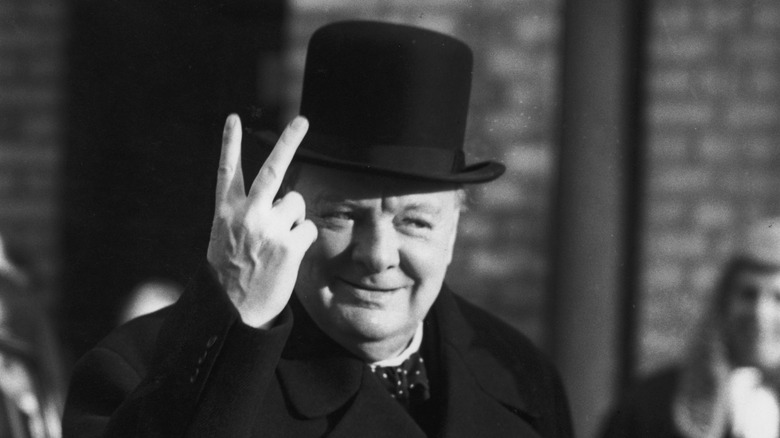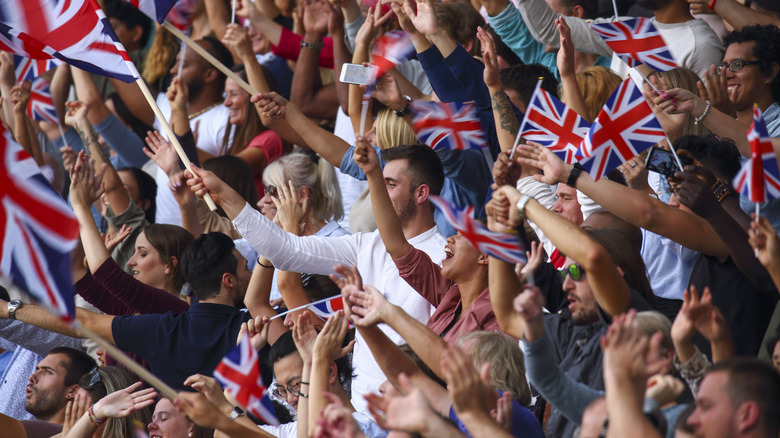One thing teachers of a foreign language know is that students, especially in a less formal setting, can’t wait to learn all the local swear words. Every country has its own specific insults and vulgar phrases, and many have equivalent hand gestures that might seem innocent enough back home but can be considered a shockingly rude insult in parts of Europe. In Britain, there is one such rude gesture that is often confused with the more benign peace sign, and Rick Steves warns that using it might “get you a punch in the nose,” per his website.
Variously known as the V-sign or the two-finger salute, we’re talking about sticking your index and middle finger up at someone with the palm turned towards yourself. In the heat of the moment, this might be performed as an angry in-your-face motion, or accentuated by flicking the wrist upwards. It’s basically the British equivalent of the middle finger in the U.S. Similarly, the U.K.’s two-finger salute aggressively invites the receiver to go away in no uncertain terms.
Much like the peace sign, which is performed with the same two fingers but with the palm facing outwards, this rude gesture also has powerful connotations of defiance and anti-authoritarianism. It has been superseded somewhat by the more American middle finger, but it’s still not a great idea to go flinging it around. Let’s take a look at its complicated history and another very inflammatory gesture popular in Britain.
The history of the two-finger salute
The exact origin of the British two-finger salute is hazy. One popular myth relates to the Battle of Agincourt in 1415 when French troops threatened to chop off the drawstring fingers of Henry V’s deadly longbowmen if they were captured. The legend goes that the English archers would taunt the enemy by waggling the offending digits in their direction. In more recent history, it is believed the first V-sign captured on film dates back to 1901 when a disgruntled worker stuck two fingers up at the camera.
Some of the most famous images of Winston Churchill during World War II show the Prime Minster holding his fingers aloft in the peace sign. In other pictures he is seen using the ruder gesture, and newsreel footage from V.E. Day show his public using both versions in celebration. In the decades since the war, the two-finger salute has developed a strong anti-establishment context, such as when it was controversially featured on the original U.K. poster for Ken Loach’s kitchen-sink masterpiece “Kes.”
Over time, the rude V-sign has been absorbed by popular culture, regularly used by working-class bands who want to show their rebellious credentials. At the height of Britpop, Jarvis Cocker of Pulp even brandished it on the front cover of NME. It is still a rule of unspoken etiquette in the United Kingdom that you shouldn’t direct it towards strangers, especially on the street or in a British pub, or you could end up with a bloody nose, as Rick Steves suggests.




